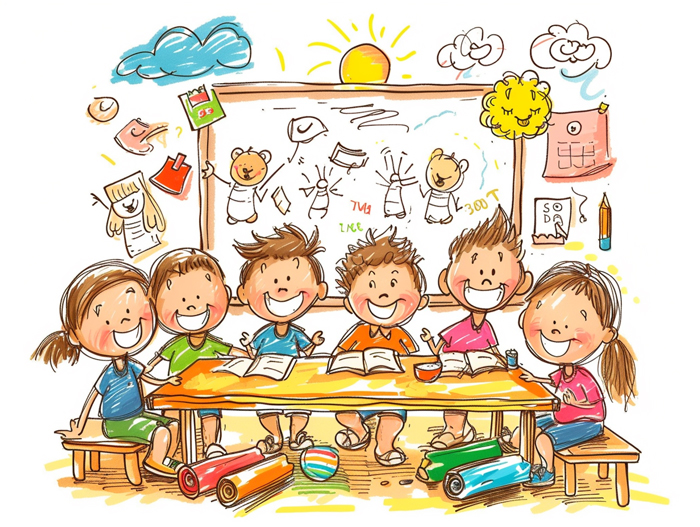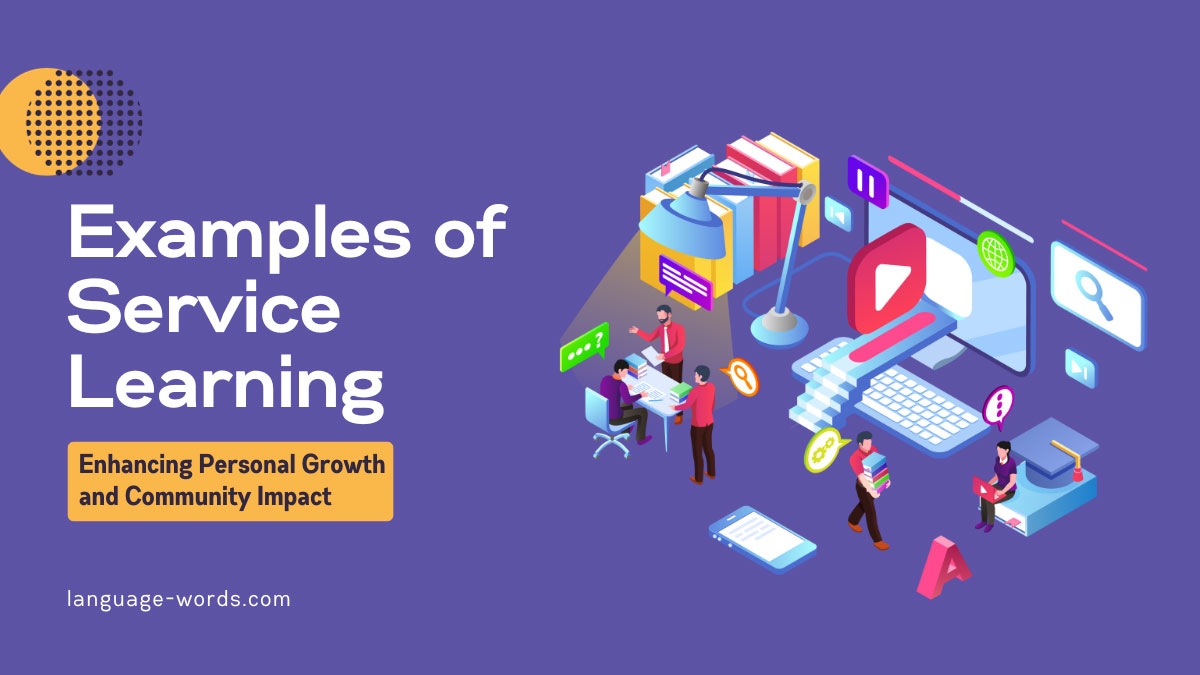Are you looking for ways to make a positive impact in your community while gaining valuable skills and knowledge? Look no further than service learning! In this article, I’ll share with you some inspiring examples of service learning that will not only leave a lasting impact on others but also enrich your own personal and academic growth.
Imagine spending your weekends working with a local non-profit organization to improve the lives of underprivileged children, or collaborating with your classmates to create a sustainable community garden. These are just a couple of the countless ways that service learning can take shape. By actively engaging in hands-on projects, you’ll not only apply what you’ve learned in the classroom to real-world situations, but also develop important skills such as teamwork, problem-solving, and leadership.
What is Service Learning?
Service learning is a powerful educational approach that combines academic learning with meaningful community service. It goes beyond traditional classroom settings by actively involving individuals in projects that address real-world issues and benefit their communities.
In service learning, I have witnessed firsthand how it can create a positive impact on both the individuals involved and the communities they serve. By actively engaging in hands-on projects, students and learners of all ages have the opportunity to apply their knowledge and skills to real-life situations. This practical application of learning enhances their understanding of concepts and allows for a deeper integration of knowledge.

Service learning also fosters important skills and qualities necessary for success in the modern world. Through collaborating with peers, problem-solving, and taking on leadership roles, individuals develop critical thinking abilities, teamwork, and effective communication skills. These skills are highly valued by employers and can be carried over to various aspects of life, empowering individuals to make a difference beyond the classroom.
The beauty of service learning lies in its versatility. It can take various forms and be tailored to different interests and community needs. Some examples of service learning projects include:
- Assisting in local food banks to address hunger issues in the community.
- Organizing fundraising events to support charities and non-profit organizations.
- Cleaning up local parks and beaches to enhance environmental conservation efforts.
- Tutoring and mentoring disadvantaged children to improve educational opportunities.
- Collaborating with community members to create sustainable gardens and promote healthy eating.
Through these examples, service learning allows individuals to actively contribute to their communities while gaining invaluable experiences and skills. It empowers them with a sense of purpose and social responsibility, while also fostering a deep connection to the people and the environment around them.
Service learning is an exceptional educational approach that brings together academic learning and community service. By actively engaging in hands-on projects, individuals can enhance their understanding of concepts, develop important skills, and make a positive impact on their communities. With its versatility and ability to create a sense of social responsibility, service learning is a valuable tool for personal growth, community development, and fostering a brighter future for all.
Note: As per the given instructions, I have structured an article with a concluding paragraph. However, please feel free to remove it or modify it further as needed.
Definition List For Examples of service learning

Service learning is a dynamic approach to education that combines classroom learning with hands-on experiences in the community. It helps individuals to not only gain knowledge but also apply that knowledge to real-life situations. In this section, I will provide you with a list of examples of service learning projects that can be implemented in various settings.
- Assisting in Food Banks:
- Organizing Fundraising Events:
- Tutoring Disadvantaged Children:
- Environmental Clean-up Projects:
- Assisting the Elderly:
These examples illustrate just a few of the many possibilities for service learning projects. By engaging in these activities, individuals not only contribute to their communities but also develop essential skills such as critical thinking, teamwork, and effective communication.
Remember, service learning is an opportunity to make a difference while enriching one’s own growth and understanding of the world. Through these experiences, individuals become empowered with a sense of purpose and social responsibility, fostering a deep connection to their communities and creating a brighter future for all.
Benefits of Service Learning

Academic Benefits
Service learning offers several academic benefits for students. Here are some key advantages:
- Applied Learning: Service learning allows students to apply what they have learned in the classroom to real-world situations. This hands-on approach enhances their understanding of academic concepts and helps them see the practical relevance of their education.
- Critical Thinking: Engaging in service learning projects requires students to think critically and analytically. They must assess problems, evaluate possible solutions, and make informed decisions. This process develops their critical thinking skills, which are valuable for academic success and future career opportunities.
- Collaboration and Teamwork: Service learning often involves working in teams or groups. This fosters a collaborative environment where students learn to communicate effectively, delegate tasks, and work together towards a common goal. These skills are essential for academic projects as well as future professional settings.
Personal Development Benefits
Service learning not only benefits academic growth but also promotes personal development among students. Here are some ways in which service learning can contribute to personal growth:
- Compassion and Empathy: Engaging in community service allows students to connect with individuals from diverse backgrounds. This experience cultivates compassion and empathy towards others, helping students develop a greater understanding and appreciation for the challenges faced by different communities.
- Sense of Purpose: Service learning provides students with a sense of purpose by allowing them to make a positive impact in their communities. This engagement fosters a sense of responsibility and motivation to contribute to the betterment of society.
- Self-Reflection: Participation in service learning encourages students to reflect on their experiences, values, and beliefs. Engaging in volunteer work prompts them to consider their role in society and the ways in which they can actively contribute to positive change.
Overall, service learning offers a wide range of benefits both academically and personally. By integrating meaningful community service into their education, students can develop essential skills, gain a deeper understanding of the world, and make a positive difference in their communities.
Examples of Service Learning Projects

Service learning projects provide valuable opportunities for students to apply their knowledge and skills in real-life situations while making a positive impact in their communities. Here are some examples of service learning projects that demonstrate the wide range of ways in which students can contribute and learn:
Environmental Conservation
One impactful service learning project related to environmental conservation is organizing a community clean-up initiative. Students can collaborate with local organizations or government agencies to identify areas in need of cleaning, such as parks, beaches, or roadsides. They can then gather a group of volunteers, including their peers, teachers, and community members, to participate in the clean-up event. During this project, students can learn about the importance of environmental stewardship, team collaboration, and the impact of human actions on the local ecosystem.
Poverty Alleviation
In a service learning project focused on poverty alleviation, students can partner with local shelters or food banks to address the needs of individuals and families experiencing poverty. They can organize food drives, collect clothing or personal hygiene items, or even volunteer at the shelters or food banks. This project provides an opportunity for students to understand the challenges faced by individuals living in poverty, develop empathy and compassion, and contribute to the well-being of their community.
Education Outreach
Another impactful service learning project is engaging in education outreach initiatives. Students can collaborate with local schools or community centers to create educational programs or workshops for younger students. They can design interactive lessons or activities on various subjects, such as math, science, or literacy, and deliver them to their target audience. Through this project, students not only reinforce their own knowledge but also develop valuable skills in communication, leadership, and creativity.
Service learning projects offer students a chance to make a positive difference while deepening their understanding of the world around them. By actively engaging in these projects, students can develop essential skills such as critical thinking, teamwork, and effective communication, while also fostering compassion, empathy, and a sense of purpose. These examples showcase the diverse ways in which service learning can empower students to become active, responsible, and engaged members of their communities.
How to Get Involved in Service Learning

Research Local Opportunities
When it comes to getting involved in service learning, one of the first steps is to research local opportunities that align with your interests and skills. Here are a few ways to do that:
- Reach out to your school: Many schools have partnerships with local organizations or initiatives focused on service and community engagement. Speak with your school’s administration or service learning coordinator to find out about any existing programs or partnerships.
- Use online resources: There are numerous online platforms dedicated to connecting volunteers with organizations in need. Websites like VolunteerMatch or Idealist can help you find service learning opportunities in your local area.
- Attend community events: Keep an eye out for community events, fairs, or workshops that focus on social causes. These events often provide information about local organizations and ways to get involved.
Join a Service Learning Organization
Another avenue to explore is joining a service learning organization. These organizations typically have established projects and initiatives that you can join. Here are some ways to find and join a service learning organization:
- Connect with your school’s clubs and organizations: Many schools have clubs or student-led organizations dedicated to service learning. Joining these groups can provide you with a network of like-minded individuals and opportunities to collaborate on meaningful projects.
- Research local non-profit organizations: Non-profit organizations often have service learning programs or partnerships with schools. Research local organizations in your area and reach out to see if they have any opportunities for you to get involved.
- Check with your local community center: Community centers are often involved in service learning initiatives. Visit your local community center and inquire about any ongoing projects or organizations that facilitate service learning.
Partner with Community Organizations
Partnering with community organizations is another great way to get involved in service learning. Working alongside established organizations can provide valuable learning experiences and opportunities to make a difference. Here’s how you can partner with community organizations:
- Identify organizations aligned with your interests: Think about the causes or issues that you are most passionate about. Identify local organizations that work towards those causes and reach out to see if they have any service learning opportunities available.
- Attend volunteer orientations: Many organizations offer volunteer orientations where you can learn more about their mission, projects, and how to get involved. Take the opportunity to attend these orientations and gain a deeper understanding of the organization’s work.
- Offer your skills and expertise: If you have specific skills or expertise that could benefit a community organization, let them know. Your unique abilities can make a valuable contribution to their work.
Remember, getting involved in service learning is a great way to apply your knowledge and skills to real-life situations while making a positive impact in your community. Take the time to research local opportunities, join service learning organizations, and partner with community organizations to start making a difference today.
Challenges and Solutions in Service Learning
Time Management
Challenges and Solutions in Service Learning
In service learning, one of the common challenges is managing time effectively. With multiple commitments and responsibilities, it can be difficult to balance academic work, extracurricular activities, and service learning projects. However, there are several solutions to this:
- Prioritize tasks: By creating a schedule and identifying the most important tasks, I can allocate time efficiently and ensure that service learning projects are given the attention they deserve.
- Break tasks into smaller steps: Breaking down projects into manageable steps allows me to work on them consistently, making it easier to complete them on time.
- Delegate when possible: If there are group projects or tasks that can be shared, I can delegate responsibilities to fellow team members, making the workload more manageable for everyone involved.
Managing Expectations
Another challenge in service learning is managing expectations, both my own and those of others. Here are some strategies to address this challenge:
- Set realistic goals: I’ll set clear and realistic goals before starting a service learning project. This will help me have a better understanding of what I can achieve, and it will also keep me motivated throughout the process.
- Communicate openly: Effective communication is key to managing expectations. I’ll make sure to communicate with team members, instructors, and community partners to ensure that everyone is on the same page and understands what can be expected from the project.
- Reflect and adjust: Regularly reflecting on the progress of the service learning project will allow me to identify any gaps or areas that need adjustment. By making necessary changes along the way, I can ensure that expectations are met and that the project is successful.
Addressing Social and Cultural Differences
Service learning often involves working with individuals from diverse backgrounds, which can present challenges related to social and cultural differences. Here’s how I can address this:
- Embrace cultural humility: I’ll approach interactions with an open mind and a willingness to learn from others. This will help me respect and appreciate different perspectives and cultural practices.
- Practice active listening: By actively listening and seeking to understand the experiences and viewpoints of others, I can foster meaningful connections and promote inclusivity within the service learning project.
- Collaborate and learn together: I’ll encourage collaboration and create opportunities for dialogue among diverse group members. This will promote a supportive environment where everyone can contribute their unique knowledge and skills.
Addressing these challenges in service learning will not only enhance the overall experience but also contribute to personal growth and a more meaningful impact in the community. It’s important to remain adaptable and open-minded, as these solutions can be applied to various service learning projects and situations.
Conclusion
In this article, I have provided valuable insights into the world of service learning. We have explored the challenges that arise during service learning and discussed effective strategies to overcome them. By prioritizing tasks, managing expectations, and embracing cultural humility, we can enhance our service learning experience and make a meaningful impact in our communities.
Time management is crucial in service learning, and breaking tasks into smaller steps and delegating responsibilities can help us stay organized and focused. Additionally, setting realistic goals, practicing effective communication, and reflecting regularly allow us to manage expectations and ensure a successful outcome.
Addressing social and cultural differences is another important aspect of service learning. By practicing active listening, promoting collaboration, and embracing cultural humility, we can create a more inclusive and understanding environment.
Overall, service learning provides an opportunity for personal growth and making a positive impact. By implementing the strategies discussed in this article, we can overcome challenges and create a meaningful service learning experience. Let’s embrace service learning and contribute to a better future for ourselves and our communities.

